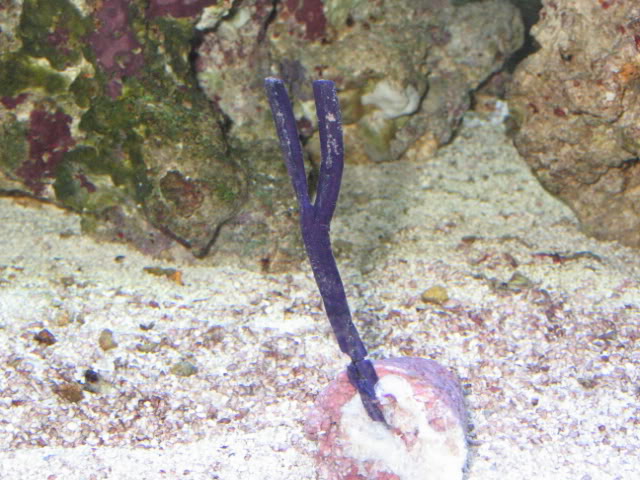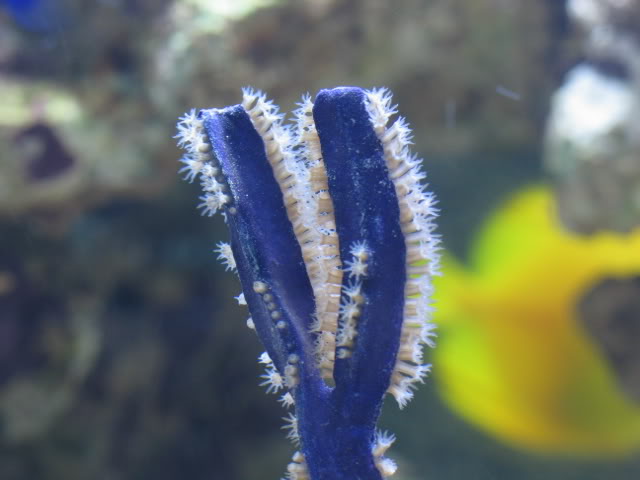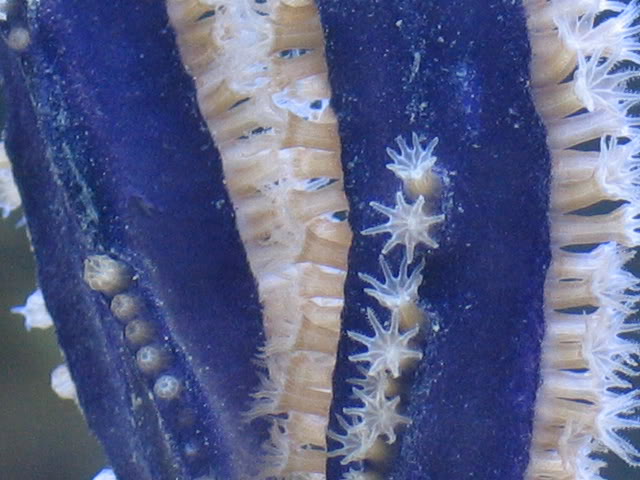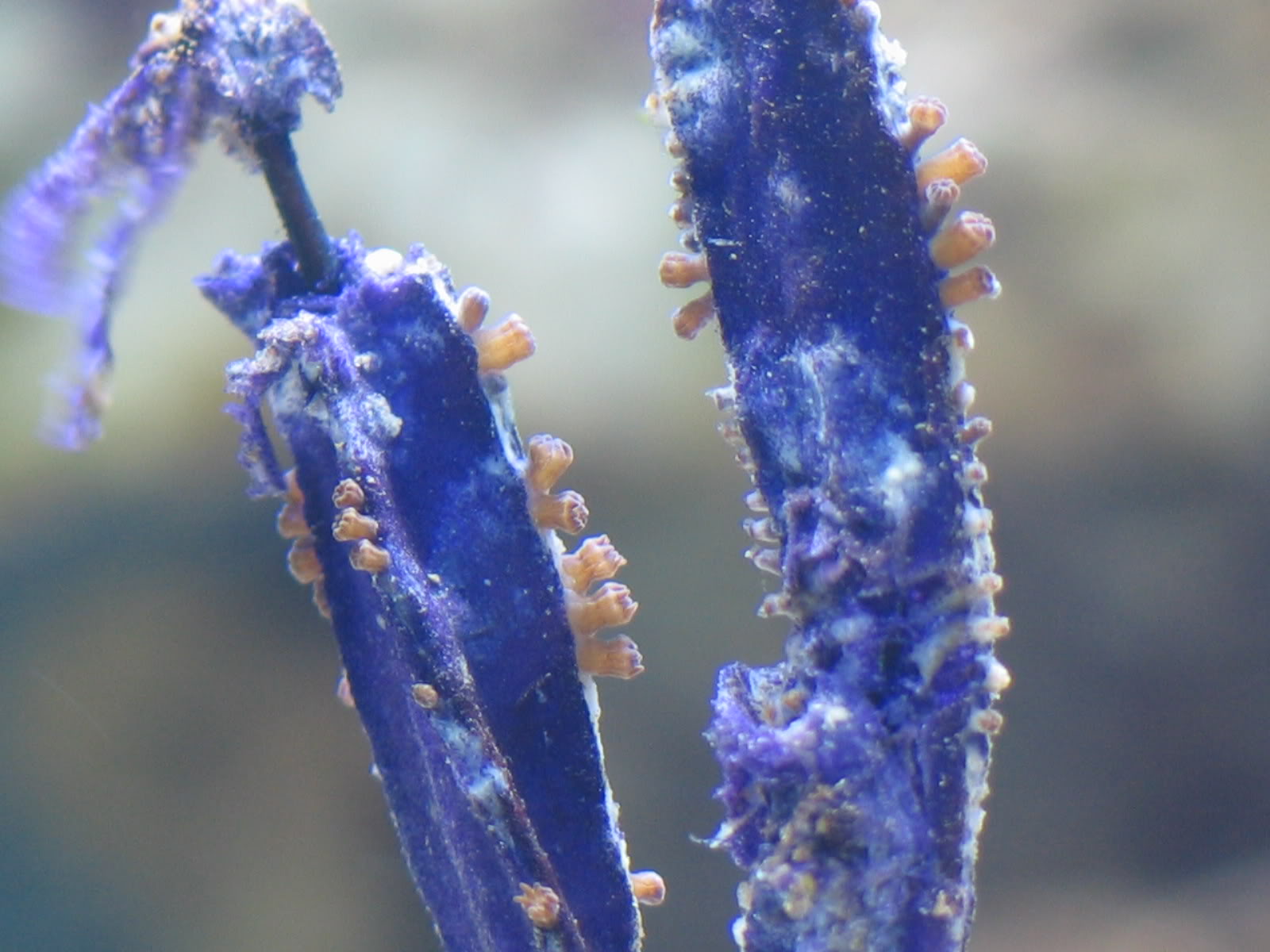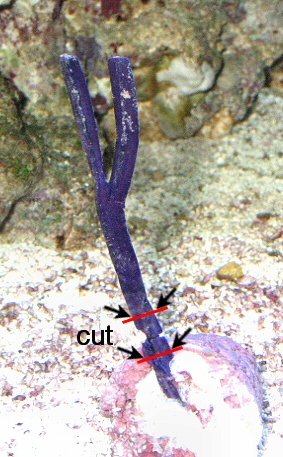The reef dip gives the coral a complexed layer of slime to keep bacteria out allowing for the flesh to heal. It's like a 'medicated' band aid. The coral is still left on it's own to heal. Now all you can do is wait.
Snipped pieces can be planted right into the substrate instead of glued onto a rock. They can be glued later if and when the pieces heal. If they do, you'll be growing a few pieces of the coral.
That's one way to propagate most soft and SPS coral...is to cut them. You can take a mushroom, cut it into four pieces...may three or just two.... and they will heal and grow into individuals. Colts and tree corals can be propagated by tying a thin string...preferrably sewing thread, around the base of a branch. It will eventually fall off. That piece is now a individual. Leathers, carnations, mushrooms, polyps, acropora, montipora, elephant coral, xenia, etc. can all be cut to make more.
The alkalinity is slightly high, though not by much. Alk levels should be between 2.5 and 4. Yours is at 4.23, so if you are adding any alkalinity additives, you may want to stop until the system shows it needs more. Calcium you mentioned is at 400. That's actually slightly low, but no biggie to the soft coral. 450 is the typical calcium level. You can continue adding a calcium suppliment until you reach 450. Sooner or later, you'll learn your tank as time goes on what it needs when. It's still new yet.
For future reference, whenever pH is low, check ammonia levels PRIOR to buffering pH. This is quite important because pH will naturally lower in the presence of ammonia to keep the toxin in a non toxic form called ammonium. Ammonia levels should be tended to first to avoid poisoning the livestock if ammonia is present.
I checked out your little photo gallery. Nice tank set up. I like the rock formation you got going there. I do have one comment...cover the power head intake with a prefilter. It will help protect the impeller from debris and can serve as a mechanical filter as well. Just rinse the sponge of the prefilter every so often to clean off debris. Needless to worry about any bio on it because of all the live rock.
I have a FujiFilm FinePix S7000 fully digital, yet can be fully manual too. The listed megapixel capacity is 6.2, but does have the ability to take 12 MP photos, which is excellent for those super macro shots. Even after a couple of years, I'm still learning the camera...LOL. Lots of little buttons and duhiggies, bells and whistles, whatever. I typically keep it set on a partial automatic setting. I'm putting together another gallery. I'll send you link once it's set up. I do a lot of computer graphics and make all sorts of things out of the photos I take. Got tons of aquarium photos of all sorts of fish and inverts. Over 10 gigs of aquarium photos alone. I like taking pictures

Please keep me updated and good luck. I've had very little success in healing gorgonias. It's like, most of the time when they get like that they don't seem to fully recover. Can only hope for the best. When populating a tank with coral, start with the easy mushrooms and polyps. As the tank matures, so many months down the line, then try another one, but do wait. Let the system grow and balance out first.
I use to go into PA long time ago. My mom's then boyfriend had some friends up in New Milford with a good portion of land. Beautiful up there especially during the fall when all the leaves on the trees are just a rainbow of color. I grew up in NJ for 22 years and once in a while we'd take a trip to Pensy to stay at their place. Next door neighbors were at least a quarter to half a mile down the road...LOL. I like that

Neighbors can be ruly and it wouldn't matter!!

